On Monday March 12th, you are invited to join Women of Culture and the Emerging Leaders of New York Arts (ELNYA) for a Conversation About Women & The Art World. Part of the Women of Culture Conversation series, this evening of networking and discussion will be an amazing opportunity to get a behind-the-scenes look at the world of fine art through the perspective of the women who work in it.
While historically women have played a huge role in building arts institutions and collections (think Peggy Guggenheim, Gertrude Vanderbilt Whitney, and Abby Aldrich Rockefeller, among others) the industry as a whole is still predominantly run by men. According to Artsy, women working across arts professions make almost $20,000 less per year than men and ArtReview’s 2017 Power 100 list of the “most influential people in the contemporary art world” was only 38% women. Additionally, work by women artists makes up only 3–5% of major permanent collections in the U.S. and Europe (Guardian), and only 30% of artists represented by commercial galleries are women (Hyperallergic).
But women like our three panelists: Anita Rogers, Danika Druttman and Lisa Small, are all working against these odds and forging successful careers in the arts nonetheless. We will get a sneak peek into three different facets of the art world, learn about their unique careers and discuss how they have each overcome some of the hurdles women face in this male-dominated industry.
There will be wine, snacks and goody bags for all as well as plenty of time for networking and viewing the current exhibit entitled Four Feet by Swedish/Finnish artist Verva Hinnemo. Artists, Arts Administrotors and Arts Enthusiasts of all kinds will benefit from this vibrant and relevant discussion.
$20 through March 9th; $25 thereafter.
Tickets can also be purchased directly through the Women of Culture site here.
***
Full Schedule:
6:30-7pm | Check-in & networking
7-8pm | Panel & Conversation
8-8:30pm | Networking & exhibition-viewing
More about the Panelists:
Anita Rogers is the Founder of Anita Rogers Gallery and British American Household Staffing, the nation’s leading domestic staffing and childcare agency. She was born in the United Kingdom but raised in Greece, which she considers home. She holds a degree in Ethnomusicology from The School of Oriental and African Studies (SOAS) as well as a degree in Western Classical Composition from King’s College London. She is a classically trained harpist and opera singer.
Danika Druttman is a cultural consultant based in New York City. As Director of Cultural Programming at Roger Smith Hotel, she has produced over 40 exhibitions, 5 years of monthly storytelling, poetry, music and performance events; conceptualized and run Window at 125 exhibition space; and developed the RS Artist Residency and fellowship opportunities. She is the founder of Mira Muse, a consultancy that specializes in conceptualizing and producing arts programming and cultural initiatives for organizations within a non institutional context.
Lisa Small is the Senior Curator of European Art at the Brooklyn Museum. Most recently, she organized the exhibition and edited the catalogue for Killer Heels: The Art of the High-Heeled Shoe(2014). She also co-curated the traveling exhibition French Moderns: Monet to Matisse, 1850–1950 (2017) as well as the Brooklyn Museum’s presentations of Georgia O’Keeffe: Living Modern (2017), The Rise of Sneaker Culture (2015), The Fashion World of Jean Paul Gaultier: From the Sidewalk to the Catwalk(2013), and Jean-Michel Othoniel: My Way (2012). She has also taught art history and the history of photography at Hunter College, Brooklyn College, and the School of Visual Arts.
***
More about the Anita Rogers Gallery & the exhibit on view:
Anita Rogers Gallery represents a diverse roster of emerging, mid career and posthumous artists whose work speaks to the contemporary landscape of the 20th and 21st centuries. The gallery, active in both primary and secondary markets, strives to cultivate the careers of exceptional painters and sculptors, both figurative and abstract, who have earned their place in the contemporary art market.
Virva Hinnemo continues to make eloquent, evocative paintings that link her uniquely physical process to a visual territory all her own. Hinnemo’s images are intimate and sublimated translations of things and objects delivered from a reservoir of visual annotations. Her language is spare and unaffected. Only what she genuinely intuits is for us to see. The virtues of paint are abundant but frugal, open-ended yet tough-minded. Hinnemo’s attitude is straightforward and not-to-be denied. If Motherwell made enduring images, Hinnemo makes hers persistent and resolute; her lyricism is of another kind. Hinnemo’s blunt inscriptions are made exclusively by hand and give the impression of signs or symbols observed directly from life and always on her own terms. She does nothing lightly.
More about ELNYA:
ELNYA is a multidisciplinary arts network and professional development group for creative leaders in their 20s and 30s. Through innovative programing, open dialogue, and a collaborative community, we redefine what it means to be an emerging arts leader in New York City.



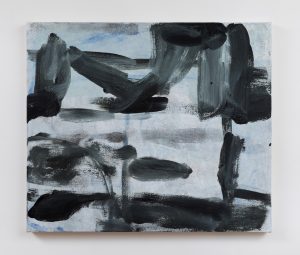
 The exhibition will showcase drawings by Gloria Ortiz-Hernández, a Colombian artist whose work is included in the permanent collections of museums such as the Museum of Modern Art in New York and in private collections throughout the United States and in Switzerland, Brazil and Colombia. Robert Szot, an artist from Texas currently based in Brooklyn, will show collages and paintings. Jan Cunningham, an American artist, will show her “Arabesque Paintings” of 2016 and 2017, celebrating the materiality of color and light and juxtaposing the anticipated with the unexpected.
The exhibition will showcase drawings by Gloria Ortiz-Hernández, a Colombian artist whose work is included in the permanent collections of museums such as the Museum of Modern Art in New York and in private collections throughout the United States and in Switzerland, Brazil and Colombia. Robert Szot, an artist from Texas currently based in Brooklyn, will show collages and paintings. Jan Cunningham, an American artist, will show her “Arabesque Paintings” of 2016 and 2017, celebrating the materiality of color and light and juxtaposing the anticipated with the unexpected.
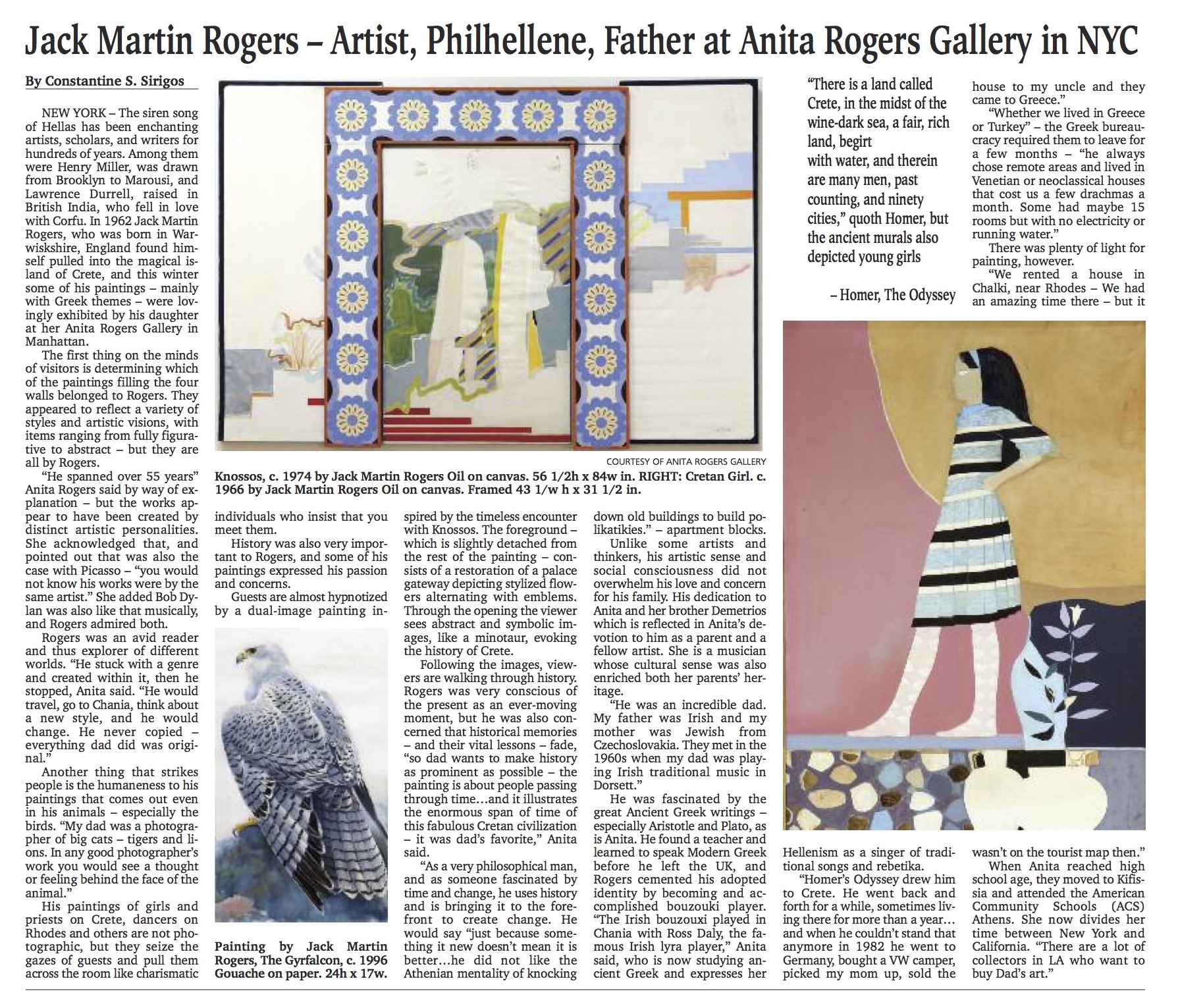
 One of the artist’s most significant works on display is a large-scale six-part canvas painting of Knossos, the largest Bronze age archaeological site in located on the Greek Island of Crete. In this painting, Rogers pulls the ancient ruins from the past into the present by using abstract designs such as the periwinkle-blue floral patterns that frame the image and bold colors including the bright and dark shades of green on the surrounding grass.
One of the artist’s most significant works on display is a large-scale six-part canvas painting of Knossos, the largest Bronze age archaeological site in located on the Greek Island of Crete. In this painting, Rogers pulls the ancient ruins from the past into the present by using abstract designs such as the periwinkle-blue floral patterns that frame the image and bold colors including the bright and dark shades of green on the surrounding grass.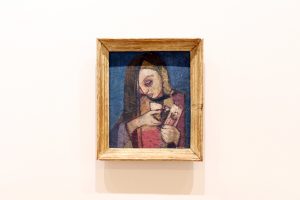 Visit the gallery’s website.
Visit the gallery’s website.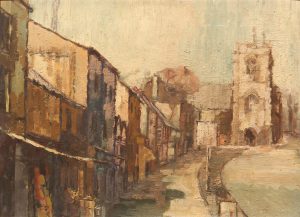
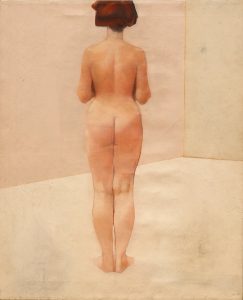 The works in the exhibition span a period of over forty years, from some of the artist’s earliest work during art school to his final masterpieces. Throughout his life, Rogers continually examined the complex notion of time and its role in the human experience. He believed forward movement and discovery are accomplished through examining history and creating relevance from the past within the present.
The works in the exhibition span a period of over forty years, from some of the artist’s earliest work during art school to his final masterpieces. Throughout his life, Rogers continually examined the complex notion of time and its role in the human experience. He believed forward movement and discovery are accomplished through examining history and creating relevance from the past within the present. NEW YORK, NY.- Anita Rogers Gallery is presenting Odyssey, a selection of drawings and paintings by British painter Jack Martin Rogers (1945-2001). Anita Rogers, the gallery’s owner and director, is the daughter of the artist and was raised across England, Turkey, Italy and Greece, countries that deeply influenced her father’s work. Anita now owns seventy-five percent of his estate. This is the artist’s first major solo exhibition in the U.S. The collection is on view November 16 – December 30, 2017 at 15 Greene Street, Ground Floor in SoHo, New York.
NEW YORK, NY.- Anita Rogers Gallery is presenting Odyssey, a selection of drawings and paintings by British painter Jack Martin Rogers (1945-2001). Anita Rogers, the gallery’s owner and director, is the daughter of the artist and was raised across England, Turkey, Italy and Greece, countries that deeply influenced her father’s work. Anita now owns seventy-five percent of his estate. This is the artist’s first major solo exhibition in the U.S. The collection is on view November 16 – December 30, 2017 at 15 Greene Street, Ground Floor in SoHo, New York.